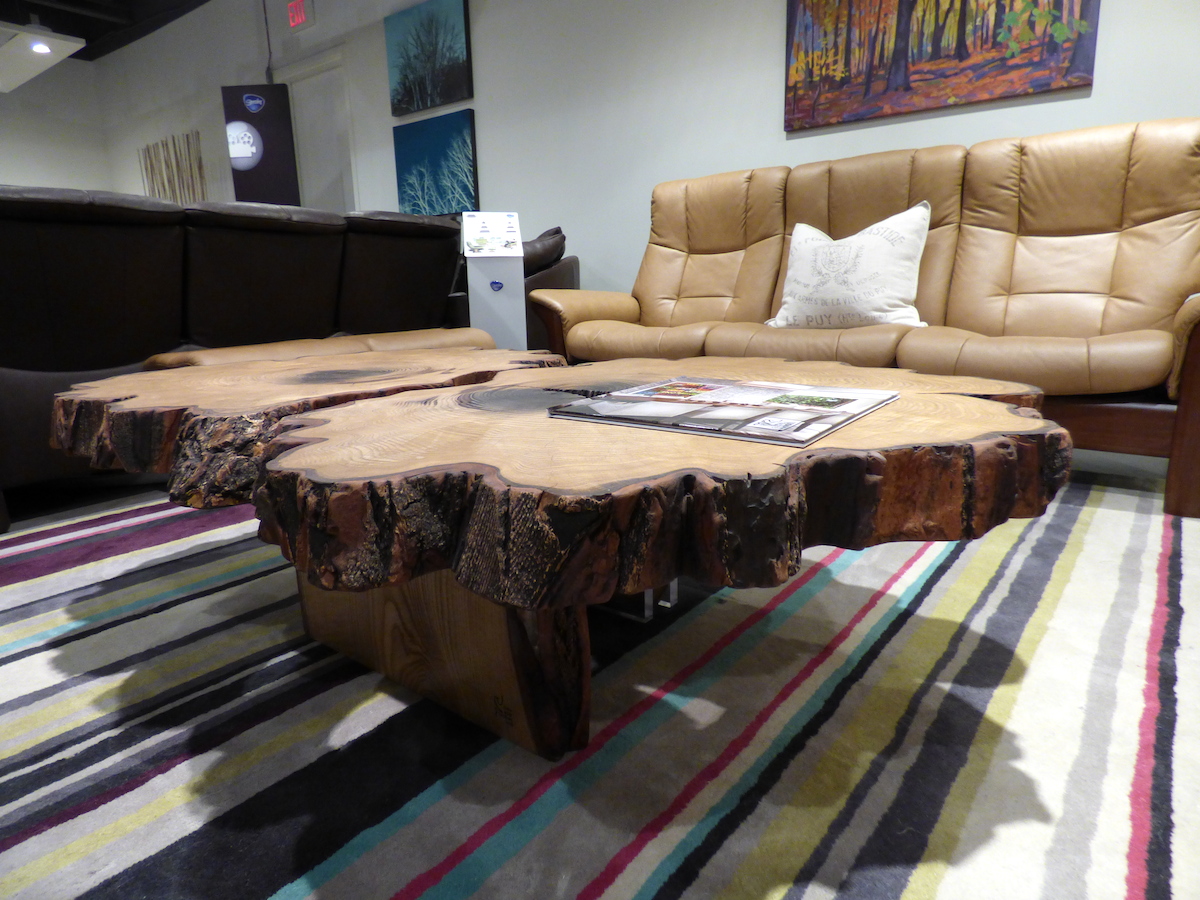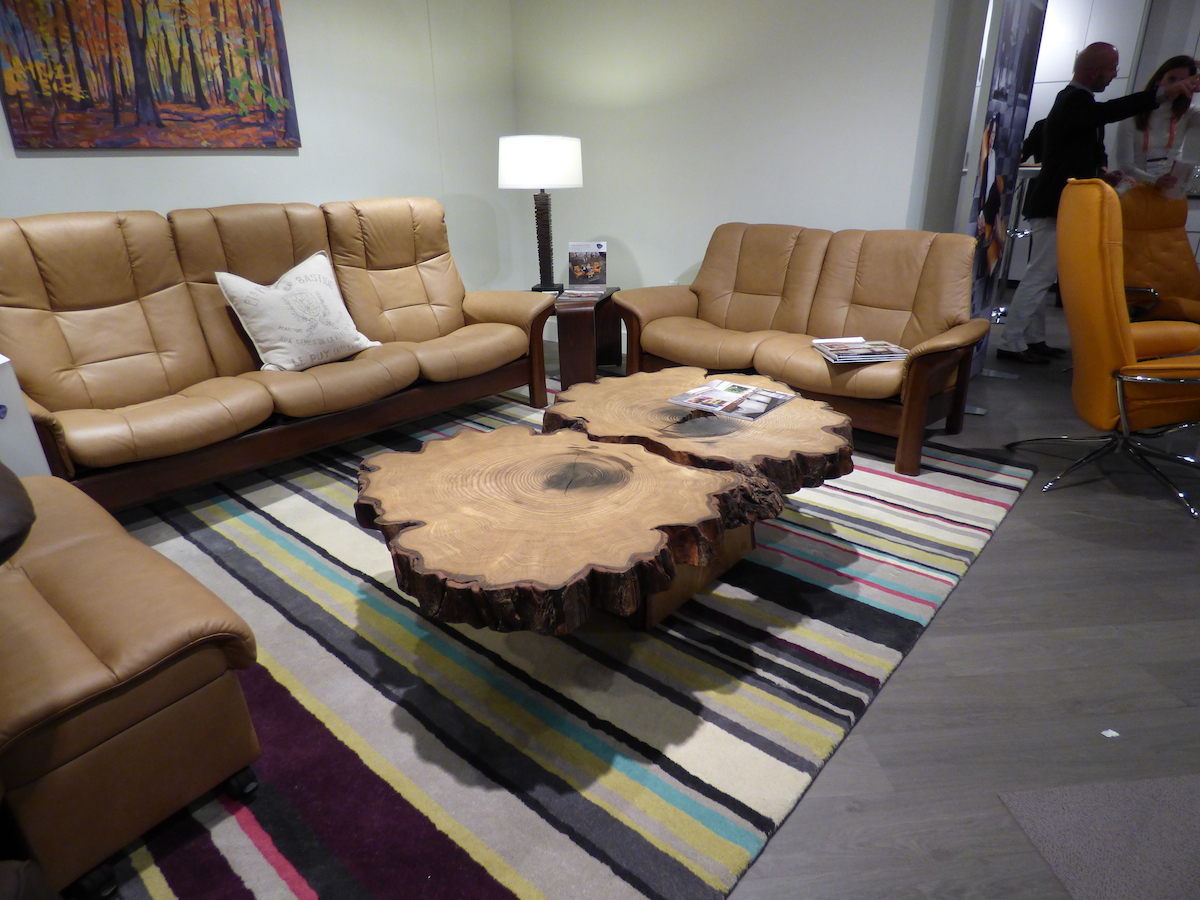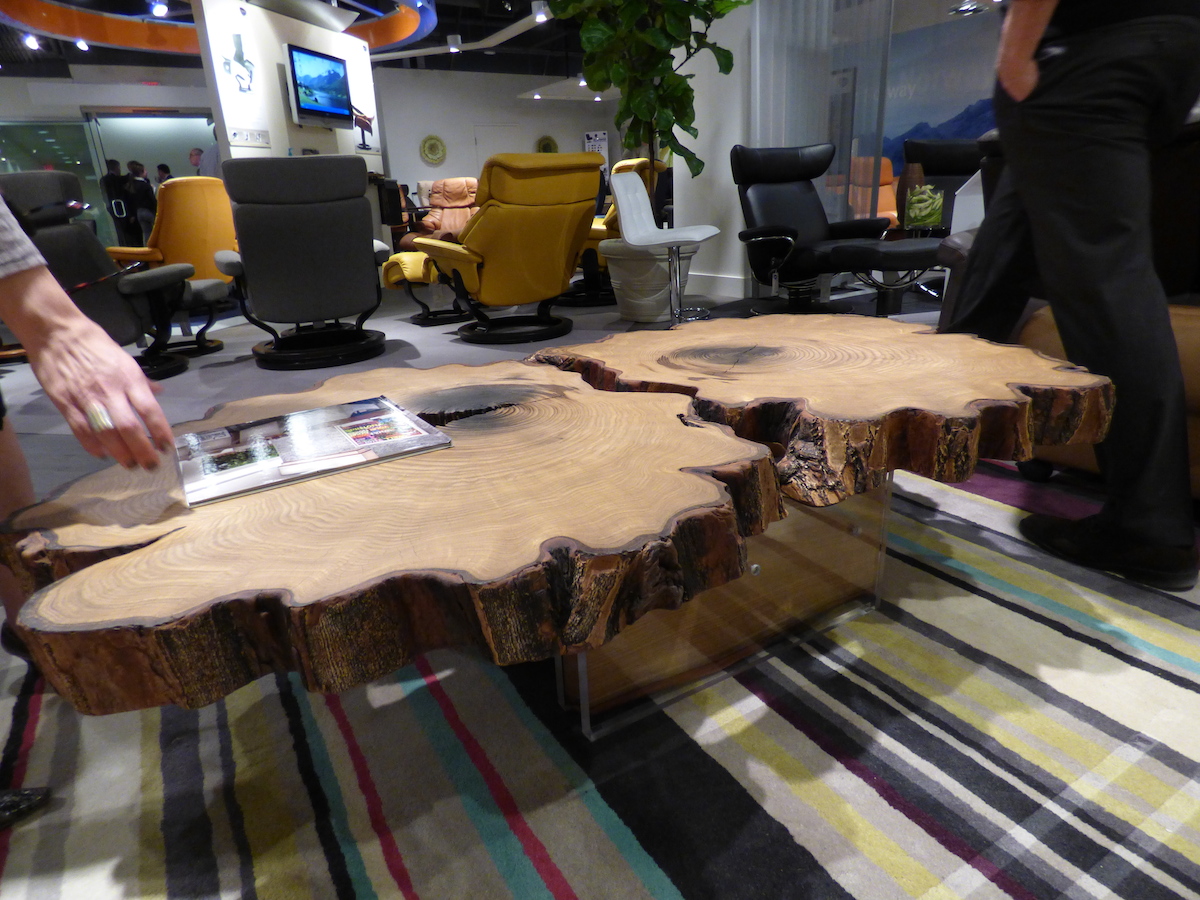Super rare Sassafras table and - What's up with the black stain?
I'm quite sure it's not. But i've yet to talk to anyone that's seen one close to this size. Quite an amazing story behind this one - I'll share when I get a chance.
btw: the two black/blue stains in the center of each fork. It's typically directly related to metal placed in / around the tree years/more like decades ago. Usually found in city trees. That's why sawmills won't touch a "city" trees. Wreaks havoc on sawmills/blades, production/safety.
We LOVE city trees. The metal stain is something we cherish. It's just a small piece of evidence of the tree's history. You can count growth rings and get a pretty good idea when the metal/nail/horse shoe/fence/whatever was placed in/around the tree. And every once in a while, Im able to save the metal, or better yet (only a few times) leave the metal in the slice/slab.
Before we mill a log into flitches, we first take a look at both ends of the log, looking for metal stain. If there's any sign of it, we find it with metal detector and work around it when we can.
Since we never use stain, keeping the natural color of the tree, there's no consideration of "Hiding" it. Not surprisingly, just the opposite.





